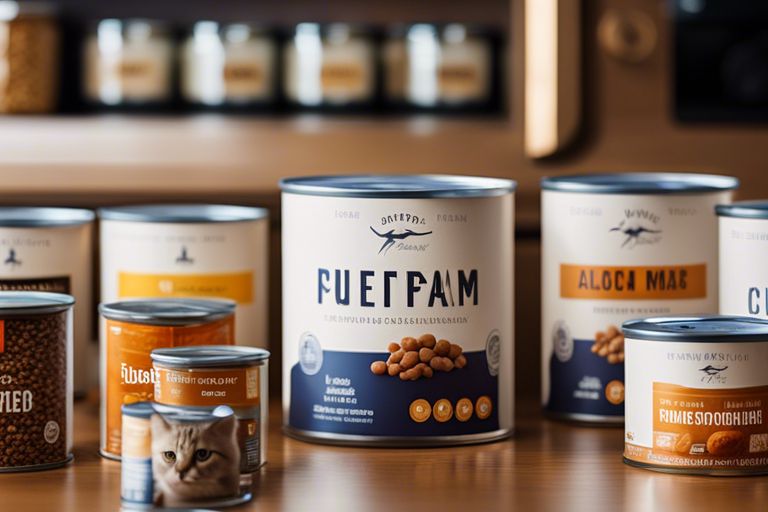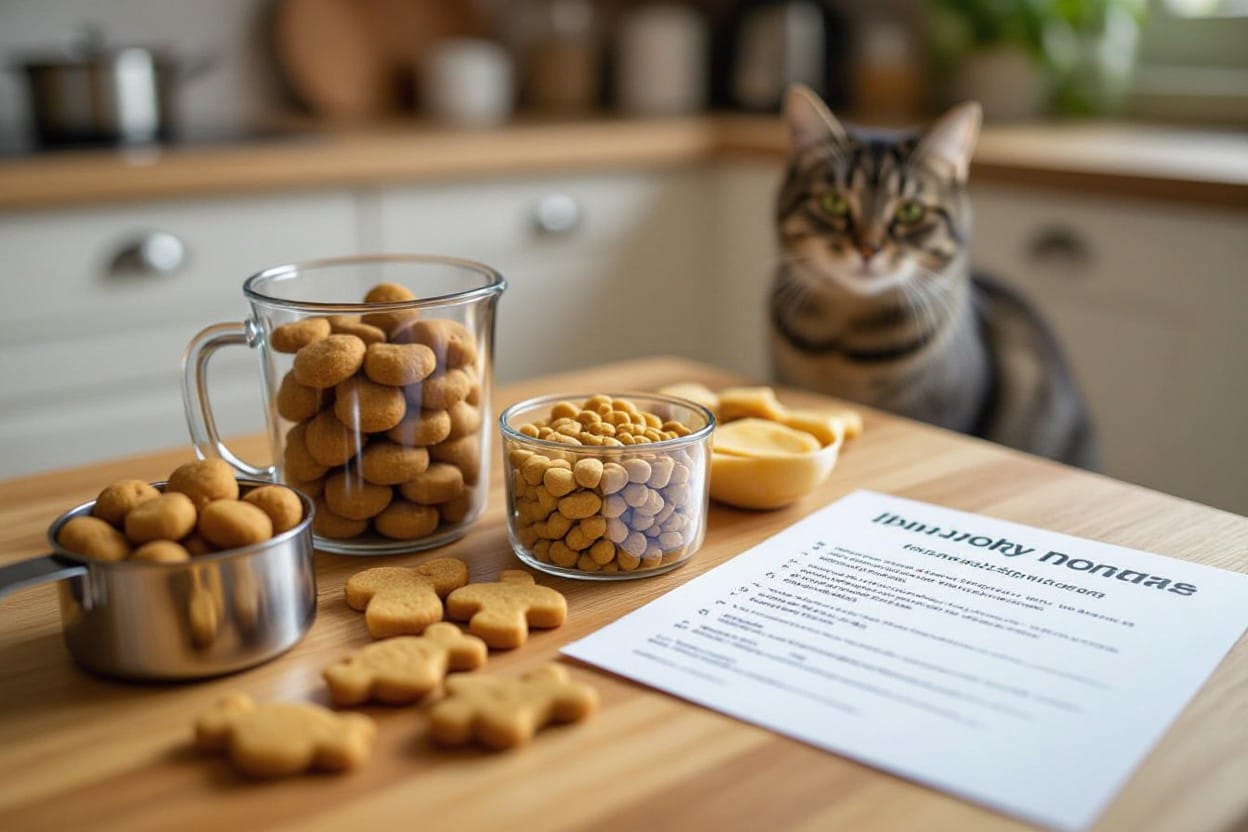You love your feline friend and want to provide the best nutrition possible. With so many cat food options on the market, it can be overwhelming to decide what is best for your pet. In this guide, we will cover everything you need to know to choose the ideal cat food based on your cat’s unique needs and preferences, ensuring they stay healthy and happy. From understanding the ingredients to selecting the right type of food, you’ll be equipped to make the best choice for your beloved cat.
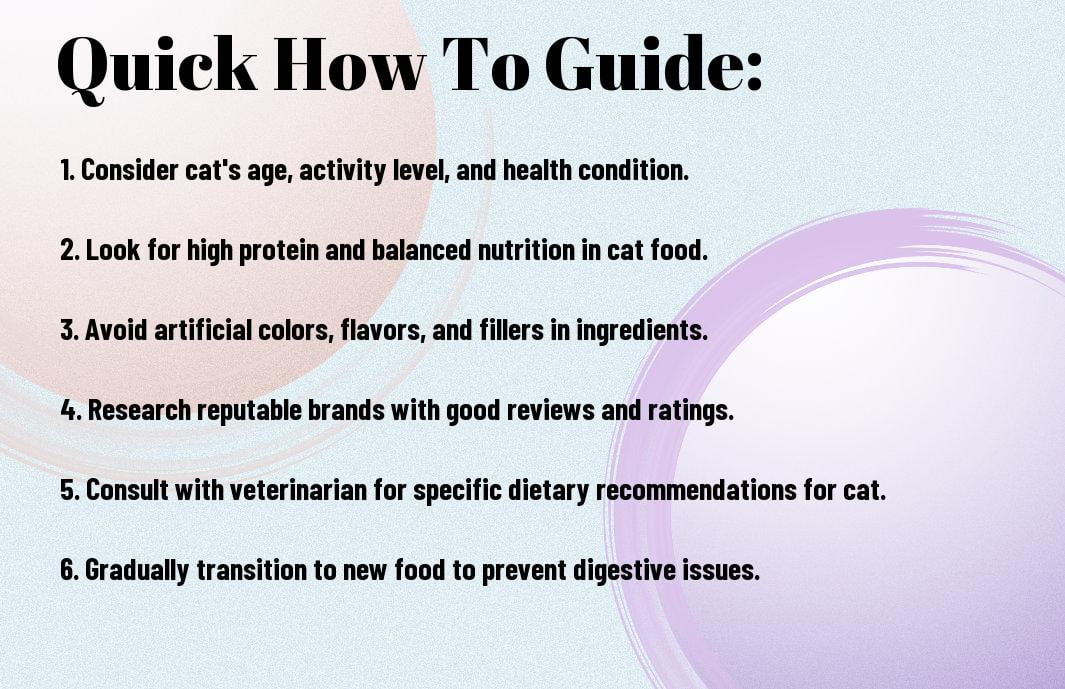
Assessing Your Cat’s Dietary Requirements
You know your feline friend better than anyone else, and understanding your cat’s dietary requirements is crucial to ensuring their overall health and well-being. By considering factors such as age, activity level, special dietary needs, and more, you can choose the best cat food to meet your pet’s specific needs.
Age-Specific Nutrition: Kitten, Adult, Senior
One important aspect to consider when selecting cat food is your pet’s age. Kittens, adults, and senior cats have distinct nutritional requirements that must be met for optimal health. Kittens need food that is high in protein and rich in crucial nutrients to support their growth and development. Adult cats require a balanced diet to maintain their overall health, while senior cats may benefit from food that supports joint health and provides easily digestible ingredients.
Activity Level and Lifestyle Considerations
Dietary choices should also take into account your cat’s activity level and lifestyle. Indoor cats may require fewer calories than outdoor cats, while highly active cats may need a diet that is higher in protein and energy-dense. Consider your cat’s overall lifestyle when selecting their food to ensure it aligns with their energy needs and helps to maintain a healthy weight.
Nutrition plays a key role in supporting your cat’s overall health and well-being, and choosing the right cat food based on their activity level and lifestyle is crucial for their long-term health.
Special Dietary Needs and Health Considerations
An important consideration when selecting cat food is any special dietary needs or health considerations your cat may have. Some cats may have food sensitivities or allergies that require a certain type of diet, while others may benefit from food specifically designed to support urinary tract health or weight management. Consulting with your veterinarian can help identify any special dietary needs your cat may have and guide you in selecting the most appropriate food for them.
Understanding Cat Food Labels and Nutritional Claims
Food labels on cat food can sometimes be confusing, but understanding them is crucial to making informed decisions about your pet’s diet. Look for important information such as the guaranteed analysis, ingredients list, and nutritional adequacy statement to ensure the food meets the minimum requirements for your cat’s health. Pay attention to any nutritional claims on the packaging, such as “complete and balanced,” which indicate that the food meets specific nutritional standards set by regulatory bodies.
Senior cats may benefit from food that includes ingredients like glucosamine and chondroitin to support joint health and antioxidants to boost their immune system.
Types of Cat Food
Unlike humans, cats have specific dietary requirements that need to be met through their food choices. Pertaining to selecting the best cat food for your pet, there are several types to consider based on their unique needs. Here are some common types of cat food to help you make an informed decision:
| Dry Food | Wet Food |
| Semi-Moist Food | Raw Diets |
| Homemade Foods | Prescription Diets |
| Therapeutic Formulations |
Dry Food versus Wet Food: Pros and Cons
One of the common debates among cat owners is whether to feed their pets dry food or wet food. Each type has its pros and cons that should be considered when making a decision.
| Pros | Cons |
| Convenient storage and serving | Lower moisture content can lead to dehydration |
| Helps maintain dental health | May not be as palatable for picky eaters |
| Cost-effective option | Higher in carbohydrates and fillers |
While both types of food have their benefits, it is crucial to consider your cat’s specific needs and preferences when choosing between dry and wet food. Thou, consulting with your veterinarian can provide additional guidance based on your cat’s health and dietary requirements.
Raw Diets and Homemade Foods
Types of raw diets and homemade foods have gained popularity among some cat owners seeking to provide a more natural and less processed diet for their pets. These diets typically consist of raw meat, organs, and bones, or homemade meals prepared with fresh ingredients.
Pros:
Advocates of raw and homemade diets claim that they can promote a shinier coat, healthier skin, and increased energy levels in cats. Additionally, some cats with specific dietary sensitivities or allergies may benefit from a customized raw or homemade diet tailored to their needs.
Prescription Diets and Therapeutic Formulations
Foods prescribed by veterinarians, known as prescription diets, are specially formulated to address specific health conditions or dietary needs in cats. These therapeutic formulations can help manage various health issues such as kidney disease, diabetes, and obesity.
Therapeutic diets are crucial in treating medical conditions and should only be used under the guidance of a veterinarian. These specialized formulations contain precise levels of nutrients to support the treatment of specific health concerns in cats. This ensures that your cat receives the necessary support for their health and well-being.
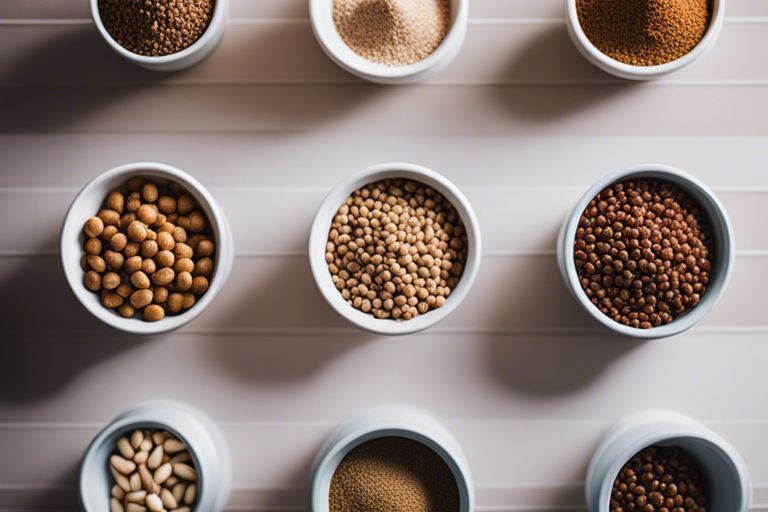
Ingredients and Nutrients in Focus
Macronutrient Balance: Proteins, Fats, and Carbohydrates
Now, when it comes to choosing the best cat food for your furry friend, understanding the balance of macronutrients is crucial. Cats are obligate carnivores, which means they require a diet rich in high-quality animal protein for optimal health. Look for cat foods that list a high-quality protein source, such as chicken, turkey, or fish, as the first ingredient. Fats are also imperative for cats as they provide energy and support various bodily functions. Healthy fats like omega-3 and omega-6 fatty acids are beneficial for your cat’s skin, coat, and overall well-being. While carbohydrates are not a primary nutrient for cats, they can still provide a source of energy in small amounts.
Essential Vitamins and Minerals for Cats
Carbohydrates are not a necessary component in a cat’s diet, as they are obligate carnivores by nature. Cats have a limited ability to utilize carbohydrates efficiently. When choosing cat food, focus on high-quality protein and fats while minimizing carbohydrates to ensure your cat receives the imperative nutrients needed for their overall health and well-being.
It is imperative to pay attention to the presence of key vitamins and minerals in your cat’s food. Essential vitamins like vitamin A, D, and E, as well as minerals such as calcium, phosphorus, and iron, play vital roles in your cat’s growth, immune function, and overall health. A balanced cat food should provide the necessary vitamins and minerals in appropriate amounts to meet your cat’s specific nutritional requirements.
The Role of Taurine and Other Amino Acids
Other critical amino acids like taurine are imperative for cats’ heart health, vision, and reproductive function. Taurine is an amino acid that cats cannot produce sufficiently on their own, making it crucial to include in their diet. Look for cat foods that are fortified with taurine to ensure your cat’s dietary requirements are met. Additionally, other amino acids like arginine and methionine are also vital for your cat’s overall health and well-being. Ensuring your cat’s food contains a balanced blend of these amino acids is key to supporting their physiological functions.
In terms of selecting cat food, understanding the importance of nutrients is paramount. In addition to proteins, fats, and carbohydrates, vitamins, minerals, and amino acids all play crucial roles in your cat’s health. By choosing a cat food that offers a well-rounded blend of these imperative nutrients, you can help support your cat’s overall well-being and longevity.
Identifying High-Quality Ingredients
Balance is key when identifying high-quality ingredients in your cat’s food. Look for ingredients that are sourced from reputable suppliers and that are minimally processed to retain their nutritional value. High-quality protein sources, such as whole meats and meat meals, should be the foundation of your cat’s food. Avoid artificial preservatives, colors, and flavors, as well as fillers like corn, wheat, and soy, which offer limited nutritional benefits for your cat.
Identifying the best cat food for your pet involves carefully examining the ingredients listed on the label. Opt for cat foods that prioritize high-quality, natural ingredients that cater to your cat’s specific nutritional needs. By understanding how to identify top-notch ingredients, you can make an informed decision that promotes your cat’s health and vitality.
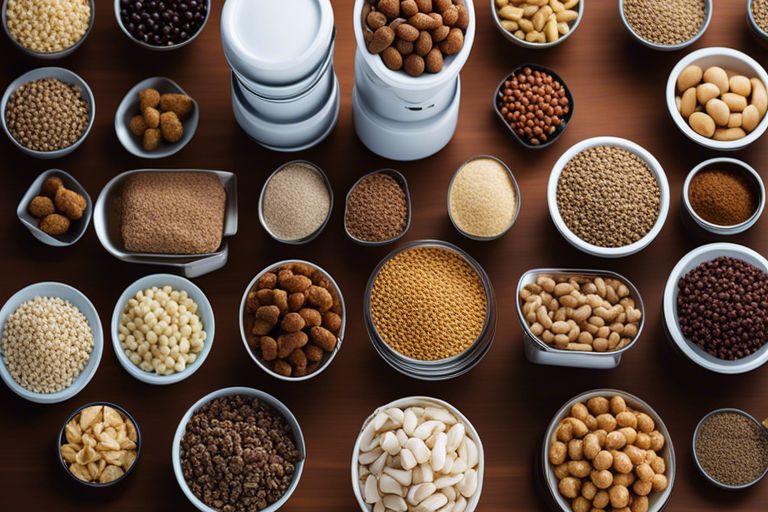
How to Evaluate Cat Food Brands
Brand Reputation and Manufacturing Standards
Reputation and manufacturing standards are crucial factors to consider when evaluating cat food brands. Look for brands with a solid reputation for producing high-quality, safe, and nutritious cat food. Check if the brand follows strict manufacturing standards, such as adhering to quality control measures and sourcing ingredients from reputable suppliers.
Analyzing Consumer Reviews and Recall History
Analyze consumer reviews and recall history to gauge the overall satisfaction and safety of a cat food brand. Pay attention to feedback from other cat owners regarding their experiences with the brand’s products. Additionally, research the brand’s recall history to determine if there have been any issues with product safety or quality control.
This information can provide valuable insights into the brand’s track record and help you make an informed decision about whether or not to trust their products for your cat.
The Importance of AAFCO Feeding Trial Statements and Certification
Some of the most reputable cat food brands undergo AAFCO feeding trials to ensure their products meet the nutritional requirements for cats. When evaluating cat food brands, look for AAFCO statements on the packaging or website, indicating that the food has undergone feeding trials to confirm its nutritional adequacy.
Manufacturing standards should also include testing for pathogens and contaminants to ensure the safety of the cat food before it reaches store shelves. Be sure to investigate the brand’s manufacturing processes and quality control measures to ensure your cat’s health and well-being.
Tips for Transitioning to a New Cat Food
After selecting a new cat food for your pet, it is vital to transition them gradually to avoid any digestive upsets. Here are some tips to help you smoothly switch your cat’s food:
- Start by mixing a small amount of the new cat food with their current food. Gradually increase the proportion of the new food over 7-10 days.
- Monitor your cat’s reaction to the new food. Look for any signs of digestive issues such as vomiting, diarrhea, or lack of appetite.
- Ensure your cat has access to fresh water at all times, especially during the transition period.
- Stick to a feeding schedule to help your cat adjust to the new food more easily.
- Consult your veterinarian if you have any concerns about the transition process or your cat’s health during this time.
Though transitioning to a new cat food may require patience and careful monitoring, it is crucial for your pet’s long-term health and well-being. Following these tips can help make the process smoother for both you and your feline companion.
FAQ
Q: Why is it important to choose the best cat food for your pet’s needs?
A: Choosing the best cat food for your pet is crucial for their overall health and well-being. The right food can provide vital nutrients and support your cat’s specific dietary requirements.
Q: What factors should I consider when selecting cat food for my pet?
A: When choosing cat food, consider your cat’s age, activity level, any health issues, and personal preferences. Look for high-quality ingredients, balanced nutrition, and avoid fillers or artificial additives.
Q: Are there specific ingredients I should look for in cat food?
A: Opt for cat foods that list a high-quality protein source, such as chicken or fish, as the primary ingredient. Avoid foods with excessive carbohydrates, artificial colors, and preservatives.
Q: How can I determine if a cat food is suitable for my pet’s needs?
A: Consult with your veterinarian to discuss your cat’s specific dietary requirements. They can recommend cat foods that align with your pet’s age, health status, and any dietary restrictions.
Q: Should I switch my cat’s food gradually or immediately?
A: It is recommended to transition your cat to a new food gradually to avoid gastrointestinal upset. Mix the new food with the old food over a period of 7-10 days, increasing the ratio of the new food each day until fully transitioned.
